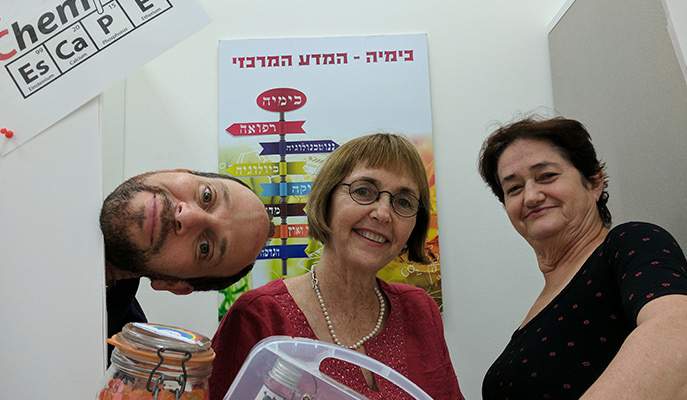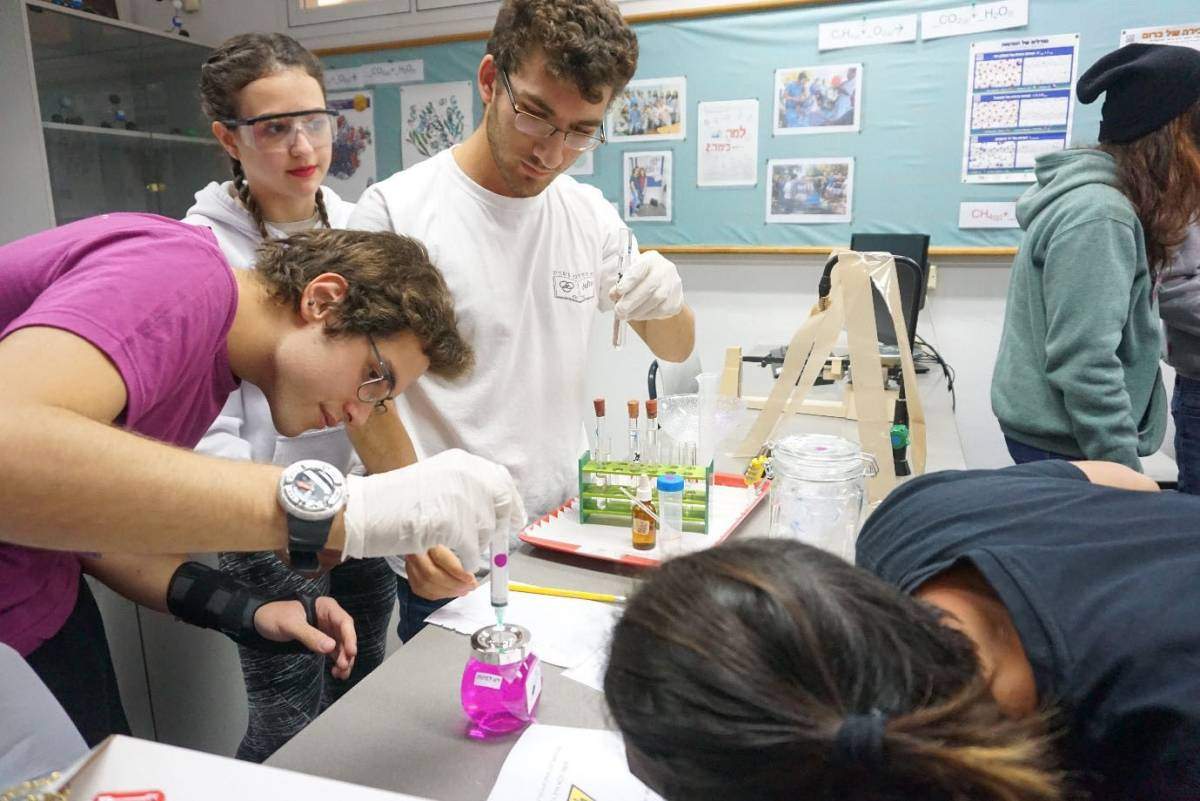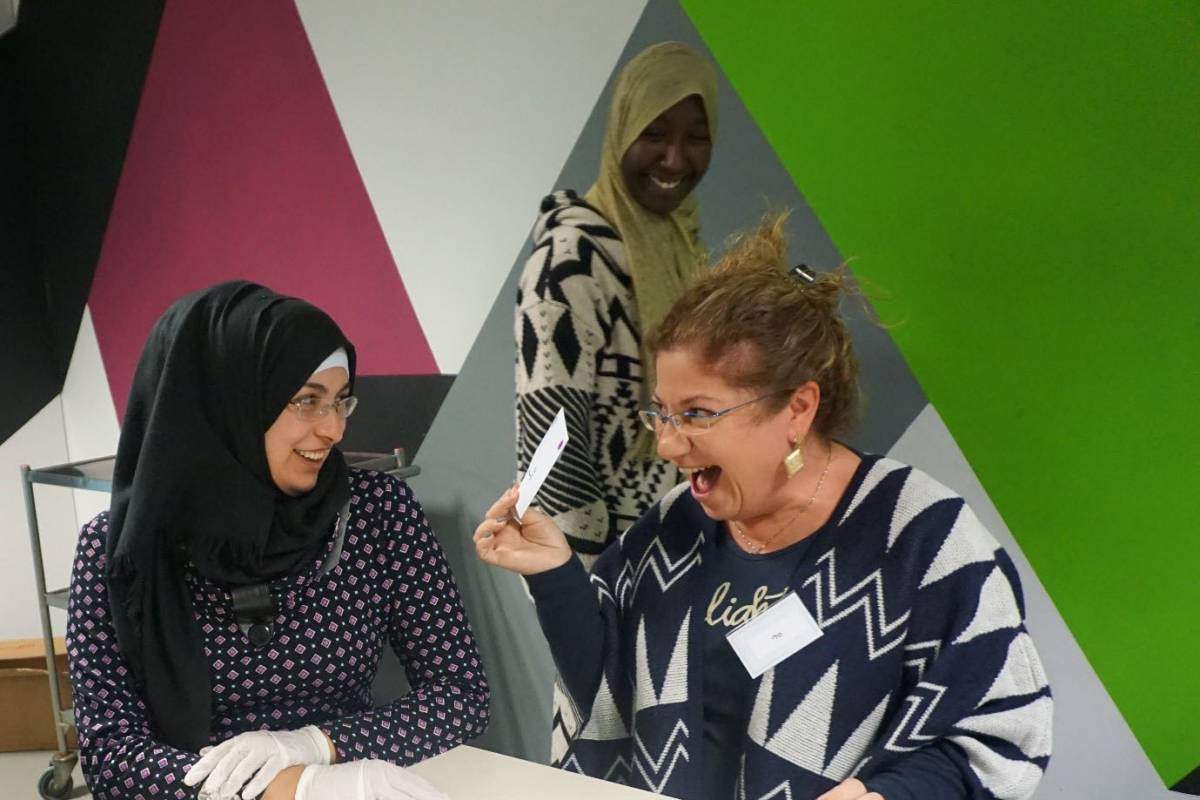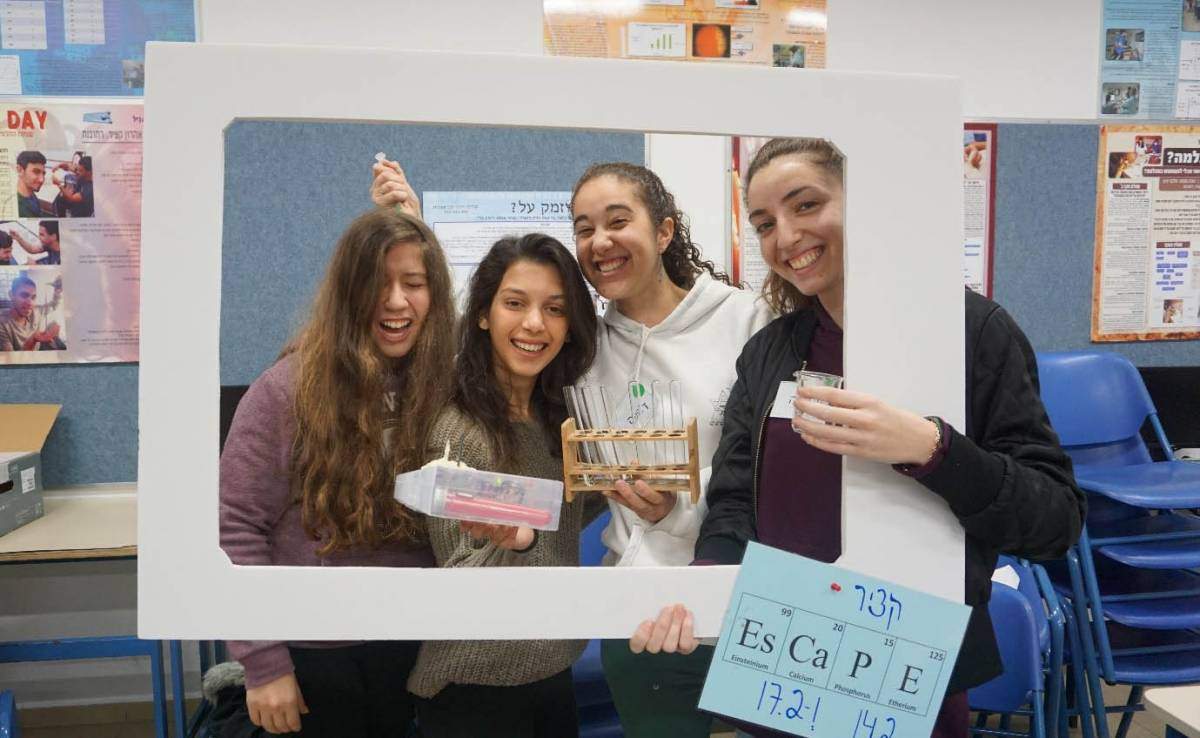Are you a journalist? Please sign up here for our press releases
Subscribe to our monthly newsletter:

Hidden bombs that must be defused and locks with unique keys. That is the premise of a wildly successful “chemical escape room.” The popular escape rooms are a form of entertainment in which a group of people are locked in a room together and they must solve a series of puzzles, find clues and crack codes in order to open the lock and escape. Holding small groups of up to six people, they generally also have a time limit of an hour. In Israel alone, some 300 escape rooms have popped up over the past two years.
The National Center for Chemistry Teachers, an organization run by the chemistry group in the Science Teaching Department of the Weizmann Institute of Science, is the sponsor of a new kind of escape room – one that combines the fun experience of the escape room with learning chemistry. Along the way, they hope to increase the motivation of high school students to study chemistry. “Chemistry Escape” is actually a mobile kit that science teachers can set up and operate in their schools. More than 300 students and 200 chemistry teachers have already managed to escape from the rooms. To get free within the hour, the group must solve puzzles, find clues – and conduct chemistry experiments – all based on their knowledge of chemistry.

Like the standard escape rooms, these require cooperation between members of the entire group, combining entertainment with challenges that require thinking. They take place in the school’s lab with equipment lent from the center; and the arrangement in the lab provides an atmosphere that suspends the everyday and invites participants to fully enter the game. Some of the equipment is lent to the schools by the National Center for Chemistry Teachers; while the school supplies the necessary chemicals from its chemistry labs. In this way, the rooms contain both “dry” puzzles that are solved by thinking and knowledge alone, and “wet” puzzles that must be solved through experiments.
The first chemical escape room was planned and built by Dr. Malka Yayon, Dr. Ran Peleg and Mor Moriah-Shipony, at the initiative of Dr. Dvora Katchevich, Head of the National Center for Chemistry Teachers. In under a year, the room was planned and assembled, and tried out in a pilot program in classes taught by Dr. Shelley Rap, who was also consulted in the planning and building stages. Dr. Dorit Taitelbaum, Chief Inspector of Chemistry Studies in Israel’s Ministry of Education, helped set up the room and a workshop for chemistry teachers was opened. Among other things, the teachers planned a second chemical escape room.

The chemistry teachers who developed the second escape room were Ornan Irit, Malka Yayon, Cintia Gilam, Sharon Deutsch, Yakirevitch Pnina, Racheli Avnieli, Tovi Hojman, Cohen Edna, Sophie Ben Dov, Shelley Rap, Ran Peleg, Esty Zemler, Oshra Aloni and Ayelet Gamliel.
The chemical escape room has garnered a fair amount of attention in the Israeli media, as well as in a number of international conferences on the subject of science education, and in the Israeli National Chemistry Teacher’s Congress. But it is the success of this program with students and teachers that have made it so popular. One student said: “It was worth while getting up this morning (even though I only slept four hours)!” A teacher expressed it this way: “The range of tasks allowed everyone to utilize his or her strengths, and to show that even the ‘weaker’ students could lead the way and help the group succeed.”

The National Center for Chemistry Teachers is supported by the Ministry of Education.